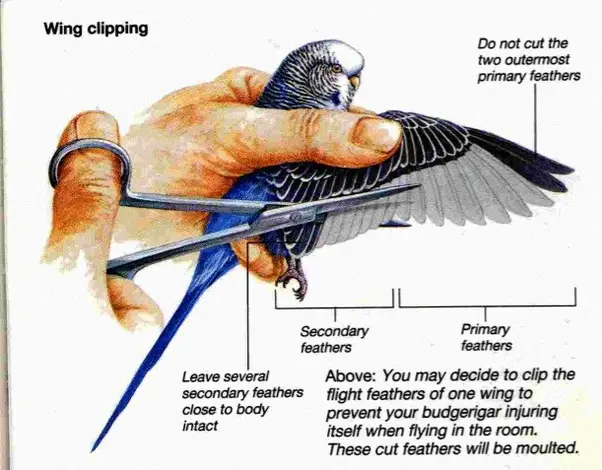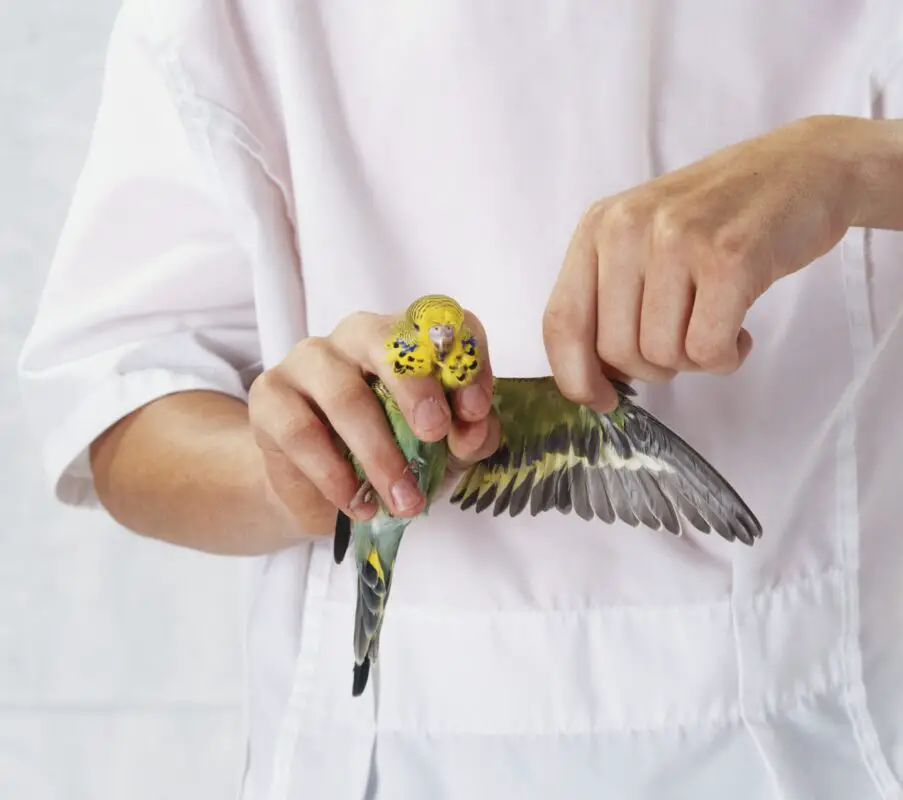Behaviors & Training, Blogs
Clipped Wings: Understanding Bird Flight Restrictions
Ever thought about how clipping a bird’s wings affects its health and happiness? Wing clipping sparks debate among bird owners and fans. While it may keep birds safe in some places, its long-term effects are deep. It’s key to understand how clipping affects birds’ bodies and minds for their best care. Let’s explore why birds have flight restrictions and the effects on their health and happiness
Key Takeaways
- Clipped wings can take several months to over a year to fully regrow, depending on the bird species.
- Wing clipping before fledging can severely affect a bird’s future abilities and health.
- Birds without the ability to fly may experience increased stress and psychological issues.
- Regular trimming of primary feathers is recommended to maintain a bird’s safety.
- Alternative measures of exercise are essential for clipped birds to prevent obesity.
The Concept of Clipped Wings
For anyone who loves birds, understanding clipped wings is key. This method involves trimming certain flight feathers to keep a bird safe while flying. It’s often done by vets, breeders, or the bird’s owners. The way to clip wings can vary, but usually, the primary flight feathers are cut by half to a third.
What Does Wing Clipping Involve?
Clipping wings right is important for the bird’s health. Parrots have 10 primary feathers, and clipping them wrong can hurt during the molt. They grow feathers daily, about 3 to 4 mm. A ‘light’ clip is often used to let birds land safely indoors but limits flying outside. Clipped birds can crash harder than those with full wings, making safety a big worry, especially in new places.
Purposes Behind Clipping Wings
Many people clip wings for safety. A survey found 65% of owners do it to stop birds from flying away. Clipped birds are less likely to hit things like windows or ceiling fans; 80% of owners saw fewer accidents. Also, 75% of owners said clipped birds interact and learn better. Keeping a good environment is key since 50% of owners said it helps prevent obesity in birds that can’t fly.
Physiological Effects of Clipping Wings
Clipping a bird’s wings has many effects on their health and how their wings develop. Birds use flying as a way to exercise, which helps make their muscles strong. When their wings are clipped, they can’t move this way. This means their muscles don’t grow strong, which can cause problems.
The Impact on Flight Muscle Development
Studies show that flying is key to keeping flight muscles strong. Without flying, birds lose muscle mass and perform worse physically. This can lead to obesity and heart problems, showing the big issues with clipped wings.
It can take several months for clipped wings to grow back, keeping birds from exercising enough. This leads to weaker muscles.
Consequences for Overall Health
Clipping wings hurts more than just their flying ability. Birds that can’t fly often pick at their feathers, showing how limited movement affects them. They also can’t run away from predators as well, making them more at risk.
Keeping birds active is key to their health. Clipped wings mess with their natural ways and thinking.
| Issue | Impact |
|---|---|
| Muscle Atrophy | Reduced physical performance and strength due to lack of exercise |
| Obesity | Increased risk of weight-related health issues |
| Feather-Picking | Higher likelihood of engaging in destructive behavior |
| Predator Evasion | Increased vulnerability due to impaired mobility |
| Recovery Time | Several months for feather regrowth can prolong adverse effects |
Clipping wings shows how important flying is for birds. It’s key to their health and growth.
Psychological Impacts of Flight Restrictions
Clipping a bird’s wings can deeply affect its emotional state and health. It can cause stress in birds, leading to unhealthy behaviors and emotional issues.
Effects on Behavioral Well-Being
Birds with clipped wings often face behavioral problems due to anxiety. About 80% of owners clip their parrot’s wings to stop them from flying away. But this can cut their exercise by up to 70%. This can make birds feel trapped, leading to self-destructive actions in 45% of clipped birds.
This emotional strain can cause severe anxiety and frustration in birds.
Potential for Stress and Anxiety
Clipped wings can make birds feel lethargic, distressed, and even show PTSD-like symptoms. Around 30% of birds may feel pain from incorrectly cut feathers. This pain, along with not being able to fly, leads to a cycle of stress and behavioral problems.
Bird owners need to understand these effects to help their pets. Using strategies for managing anxiety and creating a rich environment can help reduce the negative effects of clipped wings.
It’s vital to recognize and deal with the behavioral and psychological effects of clipped wings. This ensures a healthier life for your bird, improving its emotional and social well-being.
Alternatives to Wing Clipping
There are many ways to keep your birds safe without wing clipping. These methods focus on training and making a safe home for your birds. Training helps manage your bird’s flight and prevents accidents. Making your home safe also helps a lot.
Training Techniques for Safe Flight
Teaching your bird to fly safely is key. Here are some ways to do it:
- Teaching your bird to avoid hazards through verbal commands.
- Utilizing designated areas for practice flights to enhance their confidence.
- Gradually introducing flights in controlled environments until they are adept at avoiding dangers.
Many pet birds that learn to fly right don’t get stressed and pick at their feathers. About 70-80% of birds stay away from stress-related problems with good training. Also, trimming wing feathers a little can help most pet birds fly well.
Environmental Adjustments to Minimize Risks
It’s important to make a safe home for your birds instead of clipping their wings. Here are some ways to make it safer:
- Removing mirrors and covering windows to prevent reflection-related accidents.
- Ensuring ceiling fans are turned off during flight times to avoid injuries.
- Securing potential predators, such as cats and dogs, away from areas your birds frequent.
- Providing outdoor flight areas or screened porches for safe exploration during good weather.
These changes show how important it is to make a safe place for birds to fly and be active. With the right steps, you can help your birds live healthier lives and enjoy flying more.
Understanding Avian Development
Understanding how birds grow is key to their health and happiness. A big part of this is the fledging age. This is when young birds learn how to fly. It’s important for their flying skills, motor skills, and behavior.
Importance of Fledging Age
Learning to fly is a big step for birds. They need to fly and explore during this time. Clipping their wings too early can hurt their flying skills and confidence.
Clipping wings early can have big effects on their life. Many birds sold may stay clipped or trapped, missing out on flying skills. This stops them from growing into strong, independent birds.
Long-Term Impact of Early Wing Clipping
Clipping wings early can make flying muscles weak. This hurts their bone growth and health. Birds without flying skills may have trouble with their brains and moving.
Exercise is key for birds. It helps make their bones strong and less likely to break later. Birds without flying can develop bad habits and behaviors. This shows why rehabbing birds right is so important.
Clipped Wings: Myths and Misconceptions
Many people think wing clipping is needed for bird safety, but it’s not the only way to keep birds safe. In fact, feather grooming is key for healthy feathers and flying. Knowing the difference can change how you care for your birds.
Contrast of Clipping vs. Grooming
Feather grooming keeps birds’ feathers healthy, helping them fly and stay well. Clipping feathers can make flying harder and might make birds more likely to have accidents. It can also make them rely more on humans.
Some birds, like chickens, have their main flight feathers clipped to keep them from flying away. But this can stress them out and cause bad behavior.
Safety Concerns and Misguided Beliefs
Some bird owners worry that clipping wings makes birds safer. But trained birds can move around safely on their own. Clipping a chicken’s wings stops them from flying away, which some think is safer.
Clipped feathers grow back, so you might need to clip them again and again. This can upset the bird. Instead, you can make their living space safe and teach them to behave well.
Summary
Clipping wings is more than just a beauty treatment for birds; it affects their health, mood, and growth. Many pet bird owners trim feathers, leading to debates among experts and animal rights groups. It’s important to know that birds without flying skills face health risks like obesity and disease.
Pet owners should think about their bird’s natural behaviors when caring for them. The American Veterinary Medical Association warns about the dangers of improper feather trimming. Instead, consider making safe spaces for birds and teaching them to come back when called. It’s key to find a balance between safety and the bird’s needs for a happy life.
Looking at wing clipping again can help us understand birds better. By learning more about bird care, owners can make choices that keep their birds healthy and happy. This leads to a community of caring and knowledgeable bird lovers.



